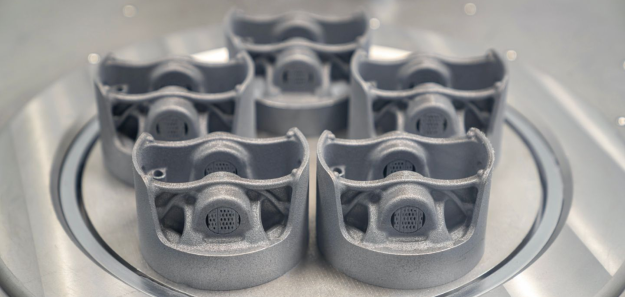
Porsche 3D prints pistons for flagship 911 model
By DE Staff
Additive Manufacturing AutomotiveSports car maker says AM produced parts allow for 30 PS power boost on GT2 RS model.

(Photo caption: Porsche AG)
“Thanks to the new, lighter pistons, we can increase the engine speed, lower the temperature load on the pistons and optimize combustion,” explains Frank Ickinger from the advance drive development department at Porsche. “This makes it possible to get up to 30 PS more power from the 700 PS biturbo engine, while at the same time improving efficiency.” (PS, short for Pferdestrke, is European power output rating roughly equivalent to bhp.)
The pistons of the 911 GT2 RS were manufactured from high-purity metal powder using the laser metal fusion process (LMF), in which a laser beam heats and melts the powder surface corresponding to the part contour. Porsche initiated the joint project together with cooperation partners Mahle and Trumpf and validated the quality and performance of the components using measurement technology from Zeiss.
Porsche already uses additive manufacturing processes in several areas including a 3D-printed bodyform full bucket seat available since May for its model series 911 and 718. In these models, the seat cushion and backrest surfaces are partly produced by 3D printing. Porsche Classic also uses additive processes to reproduce plastic, steel and alloy spare parts that were previously no longer available.
www.porsche.com
